With the latest models able to reach speeds approaching those of land-based, open-wheeled racecars, powerboats for offshore racing continue to achieve new levels of performance. If engineering firm Stamps Engineering Services gets its way, the next step in the evolution of these sophisticated machines will be widespread adoption of a new type of engine that promises higher power-to-weight and power-to-size ratios than the current standard.
Despite these advantages, the company hit a snag before it could begin playing its current leading role in bringing the new engine design to market. The next step after completing the design was building a prototype to validate and fine-tune the concept. However, the company couldn’t find a machine shop willing to take the job, says Stamps Engineering’s Tim Stamps. “The large number of parts and their considerable geometric complexity created a very difficult CNC programming challenge,” he notes. “We talked to several companies, and they told us the job was too difficult.”
An organization of Stamps Engineering’s size and resources would not have been able to produce the complex prototype with conventional CNC programming software, Mr. Stamps says. However, Delcam for Solidworks, from software developer Delcam (Windsor, Ontario), offers feature recognition and toolpath algorithms that enabled the company to write programs for and build the hundreds of machined components the motor required in only five weeks, Mr. Stamps says.
The ocean-going racing boats for which the new engine was developed are both fast and large. Some “Class One” boats, for example, can achieve speeds as fast as 250 mph (400 km/h), measure approximately 42 feet (13 meters) long and 12 feet (3.5 meters) wide, and weigh in at about 6 tons. Typically constructed as catamarans, the boats commonly feature glass-reinforced polymer hulls, turbo-charged engines and integral surface drives. Most employ between one and four big-block piston engines with as much as 12,000 horsepower.
Stamps Engineering was hired to develop a version of the Wankel engine that could outperform these models. Perhaps best known for powering Mazda’s RX-7 and RX-8 sports cars, Wankel engines use a triangular rotor rather than reciprocating pistons to convert pressure into rotating motion. The rotor mounts on an eccentric shaft within an ovular housing with ports for intake and exhaust. Each of the rotor’s three lobes contact the inside of the housing to create three separate chambers. As the rotor spins, these chambers expand and contract to drive the engine via the same four-stroke cycle seen in typical piston-driven engines.
With no valves, valve trains, connecting rods or crankshaft, the engines are lighter and more compact than piston engines that achieve equivalent power output. In addition to providing a higher power-to-weight ratio, the design is more reliable than a piston engine because it contains fewer moving parts.
Stamps’ engine packages these benefits in a size and configuration designed to easily replace the big-block piston engines that are popular in offshore powerboat racing. The engine measures 30 by 30 by 30 inches, including intake and exhaust manifolds, and the inlet and exhaust ports are set up to match those of the piston engines. The rotors are OEM models that Stamps’ client bought on eBay.
However, whereas most Wankel engine designs use two rotors and a single shaft, Stamps’ engine employs 12 rotors that ride on three shafts. The need to provide plumbing for these three shafts significantly increases the complexity of this design. Adding to that complexity is the fact that the engine design employs a range of materials, including 7075 aluminum for the housings, 4340 alloy steel for the shafts, 8620 steel for the gears and A2 tool steel for the sleeves and wear plates, Mr. Stamps says.
The company needed a prototype to prove out this new concept. However, despite tough economic times, it couldn’t find a shop willing to take on the project, Mr. Stamps says. “It’s not hard to see why,” he notes. “These are not easy parts. The shafts are eccentric, and the housing has a complex, epitrochoidal shape. Even the housings, such as the divider plates, which serve as the boundaries for the cylinders, and the side plates, which hold the rotor bearings, are difficult to machine because they contain long holes that must be held to tight tolerances.”
Left to its own devices, the company took advantage of an opportunity to obtain time on a Haas VF4 four-axis machining center. With a 20-by-40-inch table, the machine was just large enough to accommodate the motor. The challenge then boiled down to producing the CNC programs for all the motor parts. That would require bringing a considerable amount of complex geometry from the SolidWorks CAD software, which was used to design the engine, into the CNC programming environment, Mr. Stamps says. “A huge number of features had to be converted into tool paths, yet we also needed the ability to create our own geometry in areas where the model did not provide the right definition,” he explains. “Delcam for SolidWorks was the only tool that met all these requirements.”
Delcam for SolidWorks operates inside the SolidWorks assembly environment, and it uses all of the CAD program’s viewing and modeling tools. Tool paths update automatically if the model changes. The software also provides all the capabilities associated with Delcam’s FeatureCAM CNC software, including machining strategies, automatic feature recognition and knowledge-based selection of cutting tools. For tasks that are too difficult for automatic feature recognition, users can manually create tool paths of unlimited complexity, a feature associated with Delcam’s PowerMill software.
Mr. Stamps used automatic feature recognition to generate tool paths for most of the parts. On more complex parts, he used interactive feature recognition, which works by selecting a feature and directing the software to recognize it. The advantage of this approach is the ability to watch the feature being generated and make adjustments as necessary. In the most difficult cases, Mr. Stamps manually added the geometry required to correctly manufacture the part.
For areas of the motor that required 3D contouring, Mr. Stamps used roughing strategies to minimize machining cycle times. The software’s surface milling strategies include trochoidal roughing, spiral finishing and the race-line machining technique. According to the developer, these strategies can increase productivity and improve both tool life and surface finish, even in challenging materials.
After completing the program for each part, Mr. Stamps used the software’s integrated simulation module to check the tool paths and finished part dimensions. The 3D simulation enabled viewing each individual cut in the machining process, and he could zoom in on the simulated part to determine whether it matched the original design. The simulation highlighted variances from specified tolerances as well as the amount of remaining material using a customizable color format. “I was able to completely program and build each part of the motor in the five weeks that we had allotted in our schedule,” Mr. Stamps concludes. “Delcam for SolidWorks was instrumental not only in getting this job done fast, but in getting it done at all.”












.png;maxWidth=45)

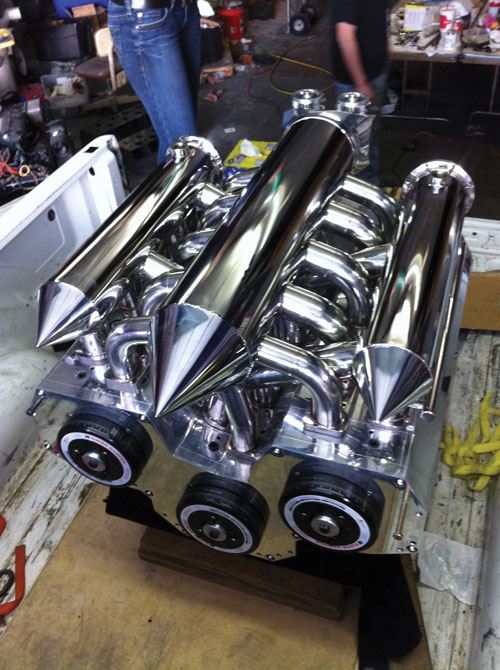
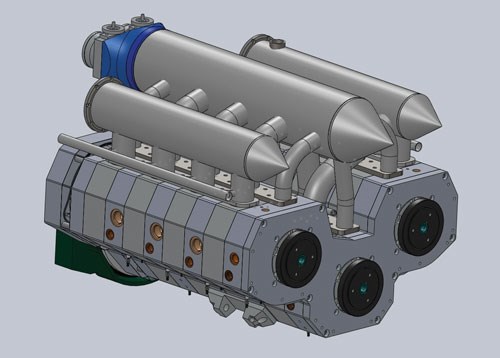
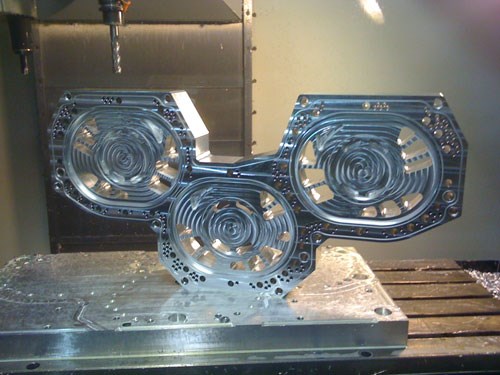
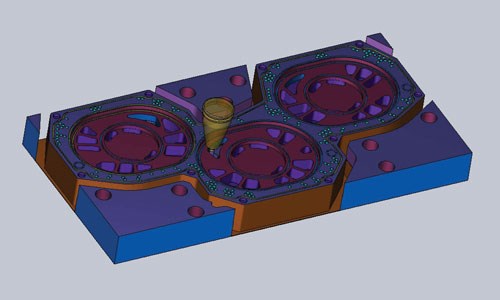
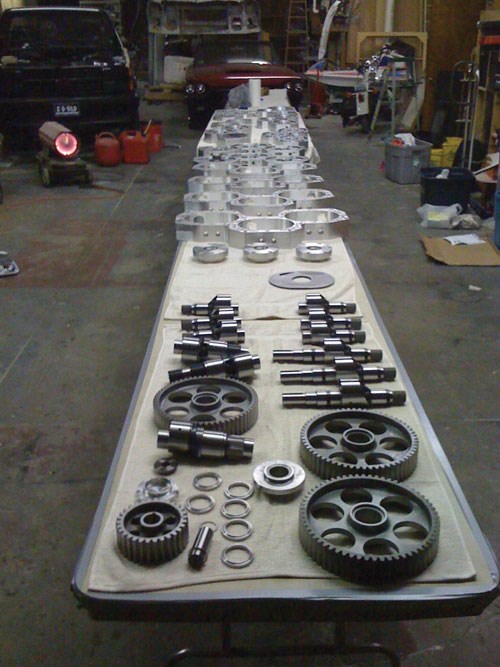
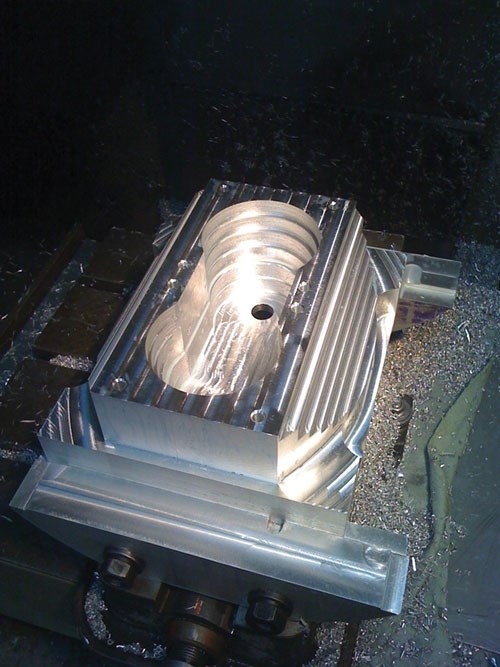
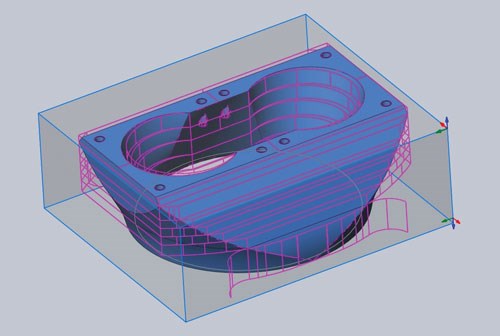
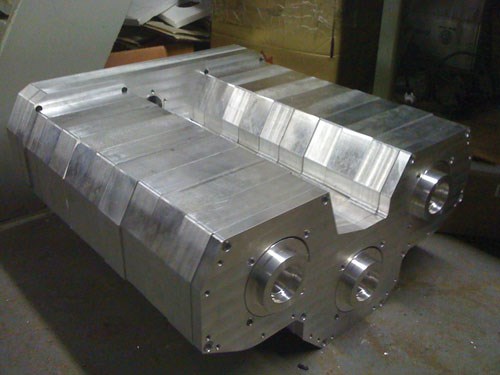
















.png;maxWidth=150)










.jpg;maxWidth=300;quality=90)
















